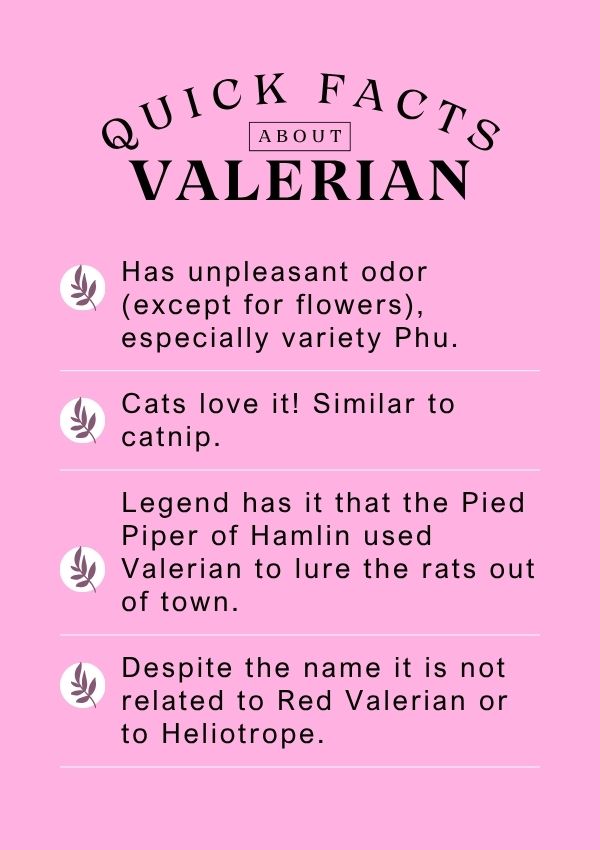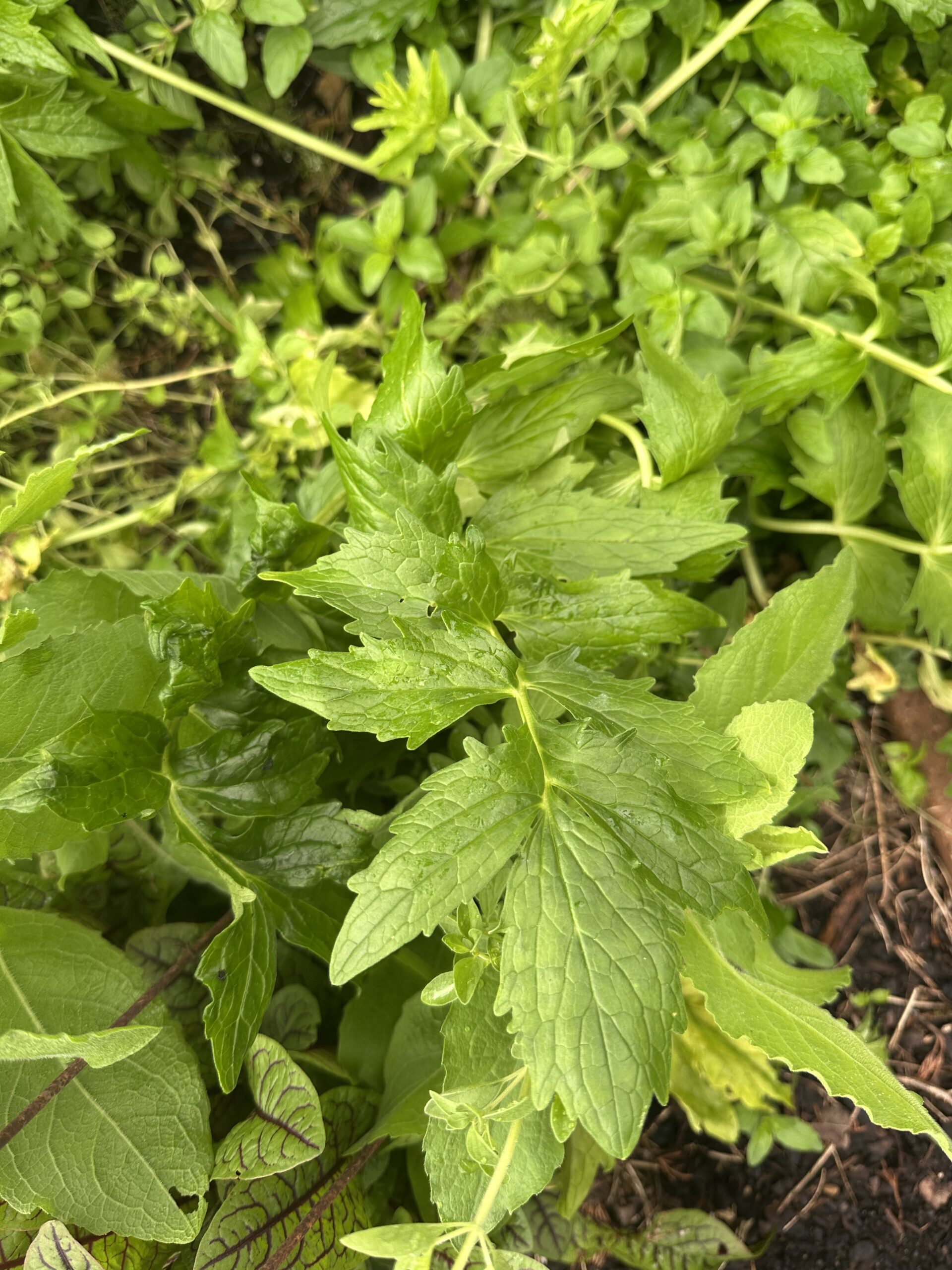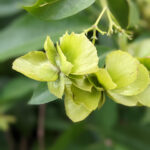Valerian, Garden Heliotrope, All-heal,
Setwall, Cat’s Love, Baldrian
Botanical Family : Valerianaceae
Native to : Europe & Asia
Researched by : Shawn Helm


Botanical Family:
Valerianaceae. Over 200 species, including Phu
Cultivation:
There are cultivars of several colors. It grows best in Zone 4, up to 3-5 feet tall. Valerian is native to Europe and Asia and is considered an invasive species in many locations outside its natural range, and was banned in Connecticut. It grows wild here in the U.S., but is cultivated commercially in Europe.
Care is minimal, but the beds must be re-dug periodically. It can be propagated by crown or runner division in spring or in fall, by daughter plants. Set one foot apart in rich soil with plenty of water. Divide every 3 years. Roots should be harvested in spring or fall before shoots come. Once established, the plant can naturalize.
The plant attracts many species of hoverflies and is used as food by some of the Lepidoptera species, including the grey pug butterfly larvae.
According to Madalene Hill, Valerian does not do well in the South.
Folklore & Traditional Uses:
Roots should be washed and dried at 120 degrees F until brittle before use. Valerian has been used to perfume soap, in tobacco and beverages, as an ornamental, and to treat insomnia. It is also believed to be a calming agent.
It was long used as a stomachic, antispasmodic, carminative, and as an antidote to the plague. It has been used since ancient times in the treatment of epilepsy.
The most significant use is as a tranquilizer. It was listed in both the U.S. Pharmacopoeia from 1820 to 1942 and the U.S National Formulary from 1942 to 1950. However, valerian based drugs are effectively no longer available in the U.S. The reason is that plant based drugs cannot be protected by patent. However, there are more than 100 proprietary drugs based on valerian and its derivatives in Germany.
Modern & Medicinal Uses:
Modern uses include as an aromatic added to perfume soap. Oil from the root is used to flavor tobacco and beverages.
Valerian is also used as an ornamental in the garden.
Cosmetically, it can be used in a soothing herbal bath.
The most dominating use is as a tranquilizer. It produces fewer side effects than the well known drug diazepam (Valium).
Toxicity Concerns
Large doses can cause vomiting, stupor, and dizziness. Continued use may lead to depression.
Recipes:
Calming Tea
In preparing a calming tea, only fresh rootstock should be used, according to contemporary herbalist John Lust. An infusion of 1 teaspoon of root in one pint of water should be drunk cold, 1 cup during the course of the day or at bedtime. It is particularly bitter.
Chocolate Infusion
Young leaves can be cooked and the roots infused in hot chocolate.
Sleep Aid
As a sleep aid, use 25 drops of liquid tincture at bedtime.
As a mouthwash, use a cooled infusion.
References:
Carr, Anna, etal., “Rodale’s Illustrated Encyclodpedia of Herbs,” Emmaus, PA, Rodale Press, Inc., 1987. book.
Webb, Marcus A. And Craze, Richard, “The Herb and Spice Companion,” NY, Metro Books, 2004. book.
Various sources compiled, “Valerian,” en.wikipedia.org, last edited May 25, 2025, accessed May 25, 2025.
Hill Madeline, Barclay, Gwen, with Hardy, Jean, Southern Herb Growing, Fredericksburg, TX, 1987. book.
Return to Europe Region
Return to Pharmacy Garden









